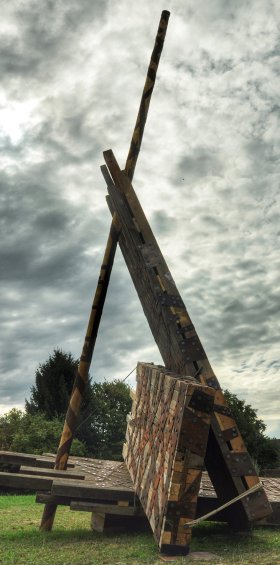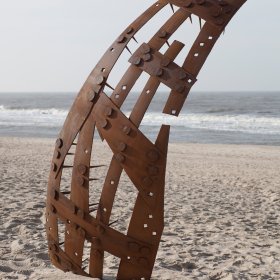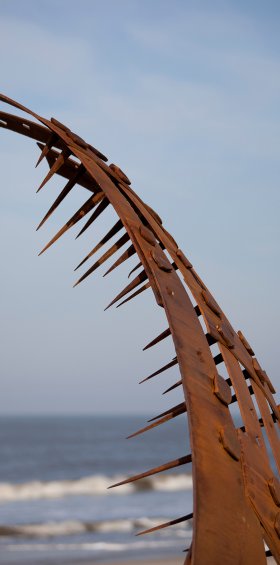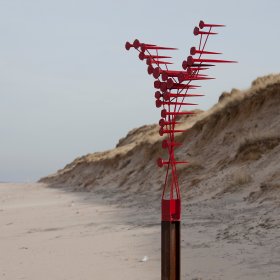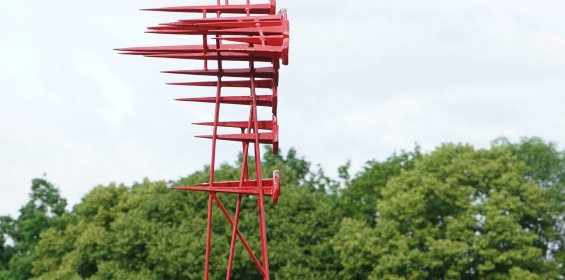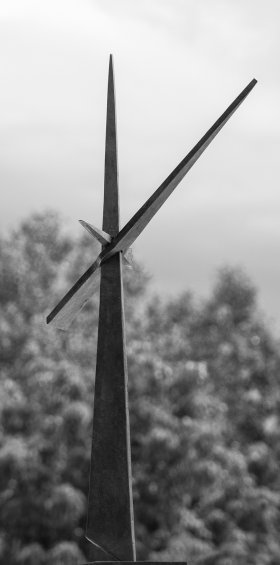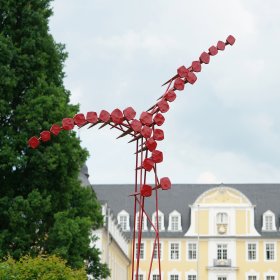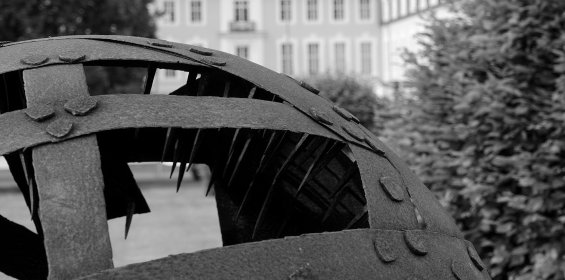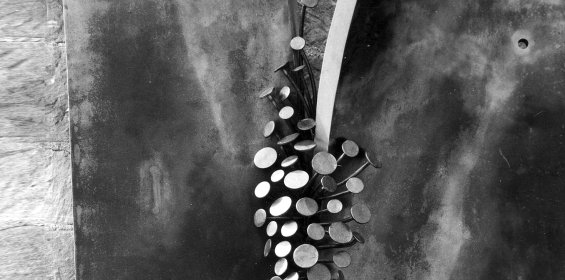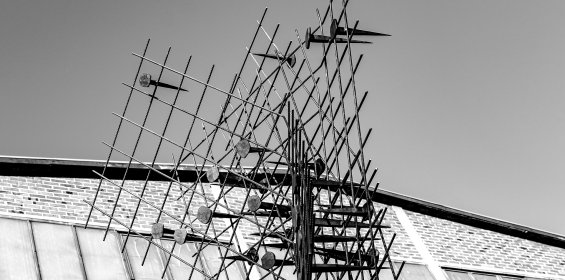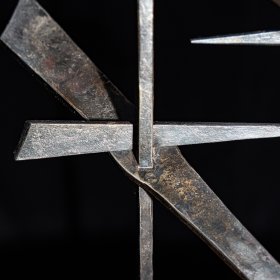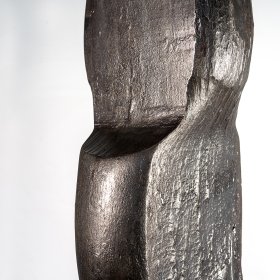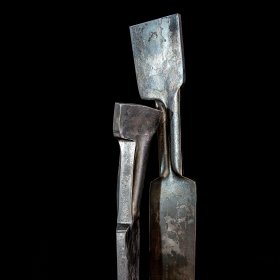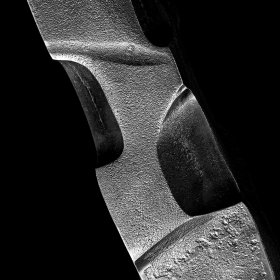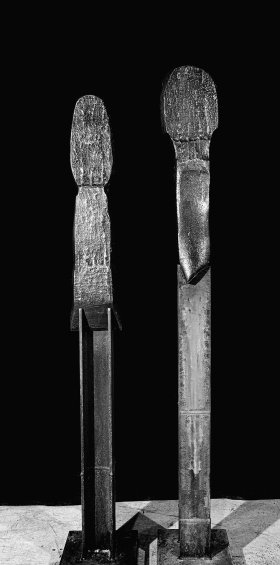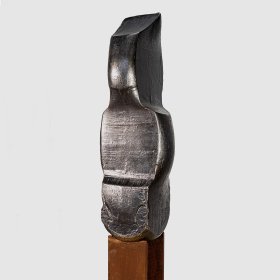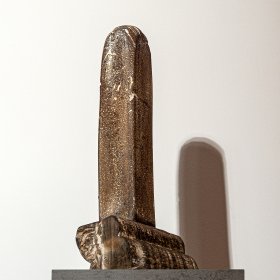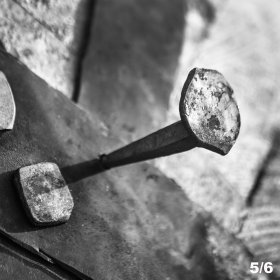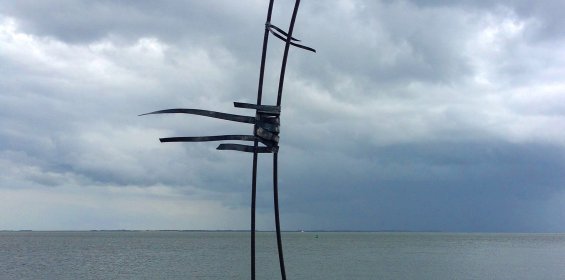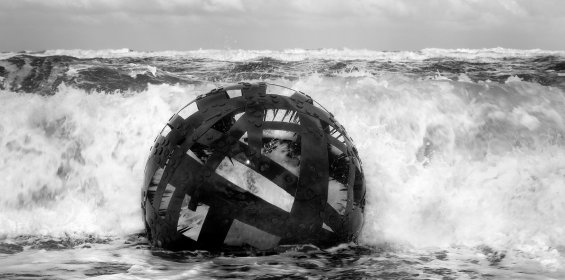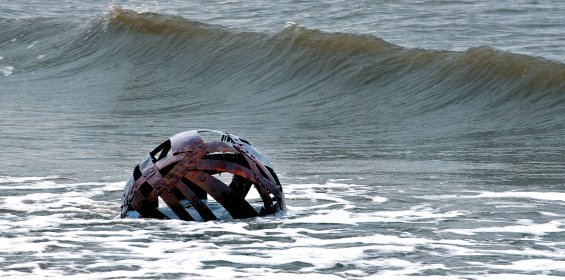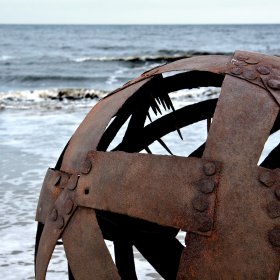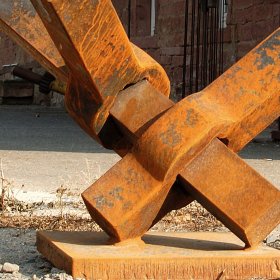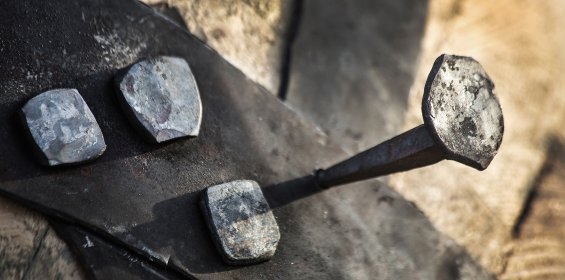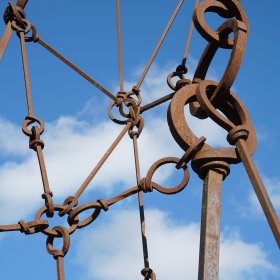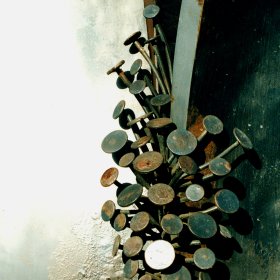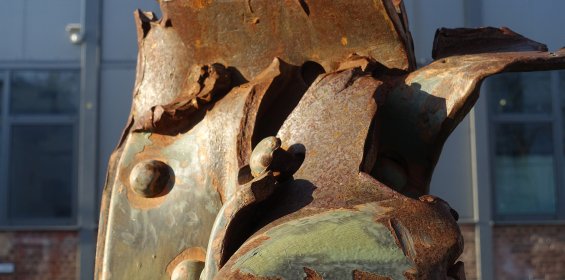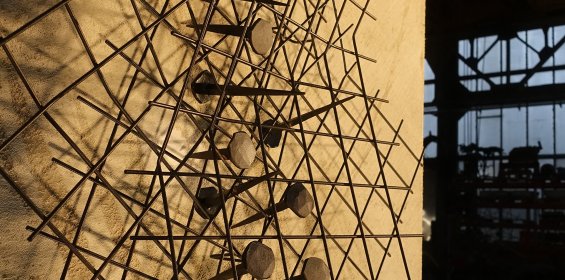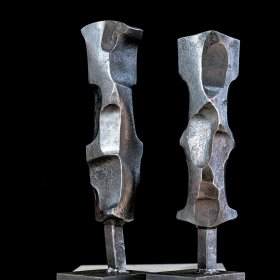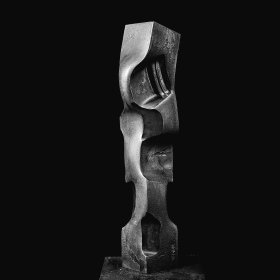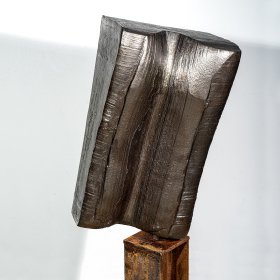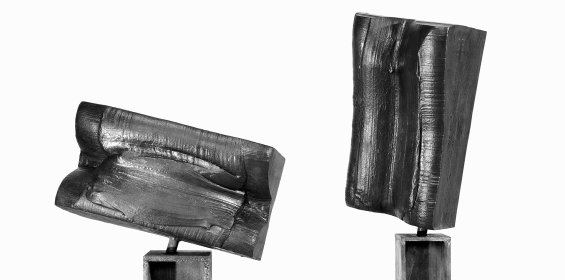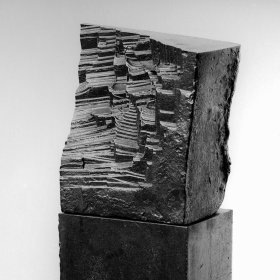Iron Age
The “Iron Age” is so named because from around 1000 BC, humans mainly made their utensils from this metal. Iron tools are effective for cutting and thrusting, which, at that time, led to the forging of scores of weapons. Esteem for the Iron Age is limited due to its reputation as a particularly warlike and gory period.
With his archaic-looking steel sculp-tures, typically intended to be installed outdoors, Georg-Friedrich Wolf purposely evokes associations with the Iron Age. The sharp edges and elongated shapes of these works are indeed reminiscent of weapons. Yet, these are not horizontally directed against human opponents or animals to be captured, they are far more pointed vertically upwards, as if aspiring contact with the sky and the cosmos. It somehow feels as if dangerous and injurious potentials still adhere to the sculptures, but in a domesticated way – fully in the sense of the idiom “swords to ploughshares”.
This also references the Second Iron Age, namely industrialisation, in which iron and steel have played a major role since the 18th century, both in the armaments industry and for civilian purposes. Superseding the more noble bronze, the artistic “Iron Age”, which started in the 20th century only, was heralded in 1932 by Julio Gonzáles, who had trained as a goldsmith: “It is now high time this metal ceased to be a murderer and the simple instrument of overly mechanical science. Today, the door is wide open for this material to be, at last, forged and hammered by the peaceful hands of an artist.”1 Gonzáles was asked by Pablo Picasso to help him transpose drawings into sculpture. This not only inspired Gonzáles to create iron sculptures, but also inspired Picasso to be a sculptor.
Richard Serra´s giant rusty steel plates, predominantly installed by the American artist in public spaces since the 1960s, can be looked at as a powerful homage to the industrial Iron Age. A reflection of Serra’s abstract monumentality is clearly identifiable in Wolf’s “Iron Age” sculptures. Here however, sober and industrial traits are combined with an associative space that points back to prehistory and mythology. One could be reminded of the monolith in Stanley Kubrick’s film “2001 – A Space Odyssey” (1968), which is immediately followed by a direct cut from prehistory to science fiction. The fact that everything new and future-oriented is short-circuited with the past likewise appears in the name of the “Electric Hephaestus”, the first electric welding machine. This appellation evokes the most eminent blacksmith of ancient mythology, who still had to wield the hammer and pound the anvil with bare hands. In contrast, Georg-Friedrich Wolf’s practice is all but archaic. Without a hydraulic press and gantry crane he would not even be able to shift his large-format objects.
1 Cf. Lexikon des künstlerischen Materials. Werkstoffe der modernen Kunst von Abfall bis Zinn, Monika Wagner, Dietmar Rübel, Sebastian Hackenschmidt (eds), second edition, Munich 2010, p. 88.



